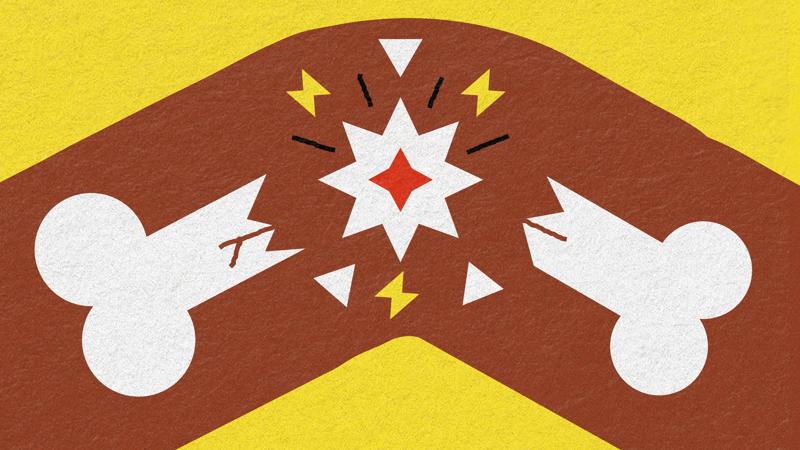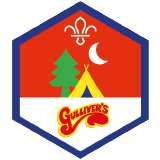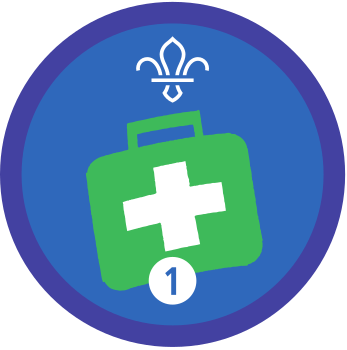
First responders
You’ll need
Before you begin
- Invite adults to help with this activity.
You could also invite Young Leaders with their Emergency First Aid badges.
- Cut out the six different steps in the ‘First aid checklist’ and mix them up.
Show and tell
- The person leading the activity should show everyone picture one, ask what they can see and what they’d do to help if they found someone in this situation.
-
- First, they should check that it’s safe to help – are there any hazards, like cars and motorbikes nearby?
- Ask for help if there are adults around.
- Comfort the injured person – ask if they are OK, if they can get up and if they need help.
- If it’s a serious accident, an adult should call 999. Talk about what counts as a 999 emergency. Examples include a traffic collision, an unconscious person or serious bleeding.
- Showing picture two, the person leading the activity should ask everyone again what they’d do.
-
- First, they should check it’s safe to help.
- If there are no adults around, they should shout to get someone’s attention or run and find a trusted adult.
- Comfort the person – ask if they’re OK, if they can get up and if they need help.
- If it’s a serious accident, an adult should call 999 for help.
- The person leading should read out the actions from ‘What to do about an accident’ below – everyone should then work together to decide which actions are best.
The key learning points are that it’s essential to stay calm, reassure the injured person and be willing to help. They might also need to shout to get an adult’s attention.
Put it in order
- Everyone should separate into small groups, each with an adult or young person to help.
- Helpers should mix up the ‘First aid checklist’ cards.
- Groups should then work out the correct order: deciding on the first step is a good place to start.
- Taking turns, each group should share its order and everyone should chat about any differences.
- Shout loudly. Shout to attract an adult’s attention.
- Run away and pretend not to have seen anything. The injured person needs comfort and help, so only run off to fetch help.
- Tell a trusted adult. It’s important to alert a parent or trusted adult.
- Comfort the injured person. Always ask if they’re OK and where they hurt, and stay with them until help comes.
- Tell the injured person that help is coming. Reassure them that help is on its way and that you will stay with them.
- Ask the injured person if they’re OK. While reassuring them, check how they’re feeling.
- Offer them a tissue. Injuries are painful, so offer a tissue if they’re crying.
- Point and laugh at them. Sometimes accidents look funny and the first reaction is to laugh, but someone might be injured and upset. Always make sure someone’s OK if they have an accident.
- Check it’s safe to help. Before helping, make sure there aren’t any cars or other hazards. If someone is on the road, stay on the pavement and call out to them.
- Ask someone to ring 999. If the injury’s serious, such as heavy bleeding or if the person is unconscious, find someone who can call 999.
Reflection
This activity helps everyone understand how to respond if they see someone who has an injury or been in a minor accident. It’s important that they keep themselves safe and seek help before tackling a problem. The group should talk about the times they’ve helped someone who is injured, maybe at school or outdoors. They should talk about what they did and how they felt about helping: did they feel scared? How did they feel afterwards? Recap the different steps to take if they see an accident – everyone should know the emergency services number.
Helping someone who’s hurt shows care for others. Talk about how to comfort someone who’s injured. Maybe reassure them, or offer them a tissue if they’re crying. The group should think about the things that make them feel better when they are unwell, sad or injured. If they want, they could share these with the group so that everyone knows how to support and care for others.
Safety
All activities must be safely managed. You must complete a thorough risk assessment and take appropriate steps to reduce risk. Use the safety checklist to help you plan and risk assess your activity. Always get approval for the activity, and have suitable supervision and an InTouch process.
Spend more time on the activities to make sure that everyone fully understands the steps. You could role play shouting for help or comforting an injured person.
Make it accessible
All Scout activities should be inclusive and accessible.
Learn more about other elements of emergency aid by working towards Stage 1 of your Emergency Aid Staged Activity Badge.

